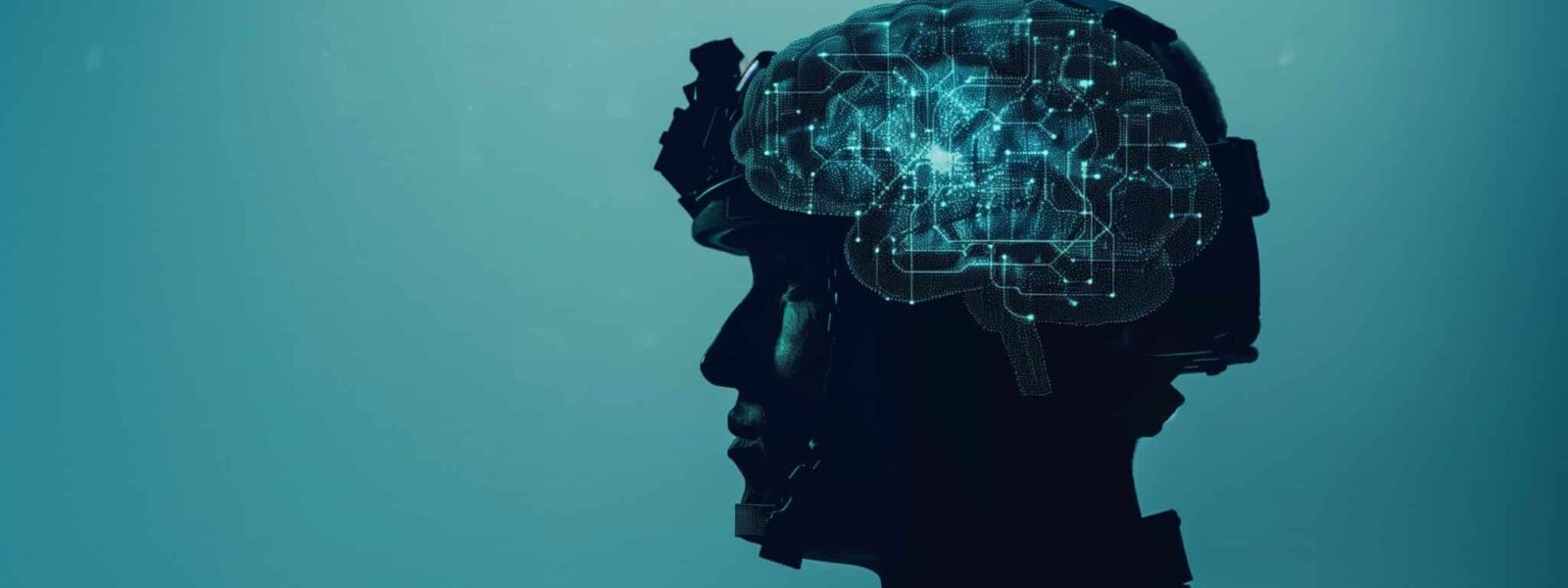Cognitive warfare: what seven years of military-civilian research reveals
- The term “cognitive warfare” was first used in 2017, without being specifically defined, by Vincent Stewart.
- A few years later, the concept of Cognitive Net Assessment (CNA) emerged, seeking to understand the mechanisms of stability and imbalance in contemporary cognitive environments.
- Three concepts therefore structure the NAC: decision-making overload, cognitive collapse, and cognitive entropy.
- Starting in 2022, the use of consumer AI will enable cognitive warfare to move beyond the artisanal stage and enter the era of “mass production.”
- Finally, Langlois-Berthelot and Gaie's model is structured around collective narratives, institutional mediation, and political regulation with the aim of achieving cognitive stability.
Attacking the enemy’s thought processes is not a particularly original concept: the practices developed by the masters of Soviet disinformation provide very concrete and relatively well-documented examples of this. However, due to the complexity of the operations involved and the resources required, these practices are more akin to small-scale craftsmanship than mass production and are still thought of as a secondary form of disinformation. Nevertheless, at the beginning of the 21st Century, advances in neuroscience and a better understanding of how the brain works suggest that cognitive processes can now be targeted in a more scientific manner.
The birth of a concept
In 2017, the term “cognitive warfare” was used for the first time by Vincent Stewart, director of the US Defence Intelligence Agency (DIA). However, it was more of a buzzword than a scientifically defined concept. Sometime later, at the end of 2018, “cognitive warfare” was still just a convenient expression used to describe all forms of informational and psychological manipulation. The term was circulating in academic circles and was often accompanied by references to science fiction or cybernetics. The first attempts at opening it up centred around a mix of imaginary prospects, war games and strategic communication. These approaches were interesting in that they raised awareness among institutions, stimulated strategic imagination and allowed possibilities to be explored. But they belonged to another register: that of projection, not measurement.
From 2022 onwards, another project was launched in the major centres of French military doctrine. The armed forces ceased to treat cognitive warfare as a future-oriented topic and instead approached it as an observable system. The Centre de doctrine et d’enseignement du commandement (CDEC) (Command Doctrine and Training Centre) then conducted a series of in-depth analyses covering the period 2022–2023. In 2023, the Centre d’enseignement militaire supérieur-Terre (CEMST) (Centre for Higher Military Education – Land) took over, incorporating modelling and tools from the decision sciences.

This resulted in the concept of Cognitive Net Assessment (CNA), based on the work of Andrew Marshall and introduced in reports coordinated by Langlois-Berthelot (2023–2024). These results mark the decisive junction between this institutional work and scientific research. Where “wargames” explore future scenarios, CNA seeks to construct a rigorous method. Rather than imagining the future, it seeks to understand the mechanisms of stability and imbalance in contemporary cognitive environments.
These mechanisms have become increasingly important since 2022, when generative artificial intelligence (AI) became accessible to the general public. These AI models are a game-changer, as they allow cognitive warfare to move beyond small-scale operations and enter the era of “mass production” and, therefore, existential threat.
Why cognitive “Net Assessment”
Traditional Net Assessment, developed by the Pentagon in the 1970s, compared dynamics rather than static resources. It assessed real asymmetries, speeds of adaptation and slow disruptions. CNA applies the same logic to the sphere of perception and collective decision-making. It does not seek to map diffuse narratives or “influences”, but rather to understand how a collective maintains or loses its interpretative coherence in the face of information flows.
Three concepts structure this approach: (1) Decision-making superposition: the moment when several contradictory representations of reality coexist without any one prevailing; (2) Cognitive collapse: a sudden shift towards a single narrative, often under the effect of an emotional or informational shock; (3) Cognitive entropy: a measure of mental and informational disorder within a social system. These concepts reflect the conviction that cognitive warfare should be treated as a question of dynamics rather than discourse. CNA makes it an engineering field whose objective is to understand the fragility of a cognitive system to protect and strengthen it.
As Langlois-Berthelot demonstrated, CNA is based on two complementary indicators: a cognitive entropy index, which measures the dispersion and redundancy of circulating narratives, and a superposition tension index, which estimates the proximity of a collapse threshold. Together, they make it possible to identify areas of cognitive instability and take action before a breakdown occurs. What fundamentally distinguishes this approach from the foresight experiments of the 2020s is this subtle balance between operationality and scientific rigour. The results can be reproduced, compared and discussed within a shared methodological framework. The discipline is definitively moving away from narrative towards measurement and controlled experimentation.
The role of artificial intelligence
AI occupies a central place in this conceptual architecture. It accelerates attention cycles, promotes micro-targeting and cognitive isolation, but it also provides the technical means to model them through detection of artificial flows, simulation of information propagation, and machine learning from weak signals. AI becomes a double mirror: a factor of instability on the one hand, and an instrument of observation on the other. In CNA, it enables the construction of dynamic representations of mental environments, not to mechanically predict individual behaviour, but to measure the collective cognitive load and resilience of a social system in the face of informational disturbances.

This approach did not originate from a single school of thought, but from a need for interdisciplinary convergence. Cognitive researchers, data engineers and doctrine officers find common ground here. This fruitful hybridisation has made it possible to produce a stable language – attractors, entropy, collapse – and to establish lasting bridges between military and scientific cultures. The 2023–2024 reports laid the foundations for this common grammar. They enabled France to align its work with emerging international standards, while establishing its own path: a science of cognitive resilience rooted in measurement, not speculation.
Diagnosing cognitive vulnerabilities
This scientific momentum continued in 2024 with a new milestone: the systemic diagnosis of cognitive vulnerabilities, coordinated by Langlois-Berthelot in association with Christophe Gaie (“Services du Premier Ministre”). Whereas Net Assessment sought to characterise the overall stability of an environment, this approach aims to understand the precise moment when a social system loses its ability to self-regulate. Drawing on the work of Bateson, Morin and Friston, this approach considers social cohesion to be an emergent property of a saturated information system. Crises do not result solely from external attacks, but from the internal amplification of unregulated feedback loops.
Society is represented as a network of multi-scale interactions between individuals, institutions and symbols. Cognitive vulnerabilities then appear as structural effects observable over time: information overload leads to emotional polarisation, which weakens mediation and accelerates desynchronisation between social groups. The Langlois-Berthelot and Gaie model articulates three dimensions – collective narratives, institutional mediations, political regulations – and evaluates not what individuals think, but the speed at which their representations are reconfigured. Cognitive stability then becomes the ability to maintain multiple interpretations of reality without narrative collapse.
Seven cognitive fields serve as resonators of cohesion: national belonging, moral ecology, social norms, historical memory, institutional legitimacy, strategic autonomy, and inter-ethnic cohesion. Analysing their interactions allows us to map cognitive entropy, comparable to an energy map of the social body. AI plays an observational role, with semantic graphs detecting narrative densifications, identifying correlations between fields and measuring cognitive transitions. It does not draw conclusions: it facilitates reading without replacing human interpretation.
Current real-life cases
An initial internal experiment, conducted in a limited, non-public setting, tested this methodological architecture. Without going into detail about the methods used, this implementation confirmed the possibility of dynamic monitoring of cognitive cohesion and early detection of areas of symbolic tension. These partial results, obtained within a limited scope, are now guiding work towards the integration of these measures into strategic observation systems. The strength of the system lies in the convergence between military and civilian cultures. One provides long-term management and the formalisation of critical thresholds; the other provides a detailed understanding of symbolic dynamics. Together, they lay the foundations for an applied science of cognitive stability, capable of measuring social cohesion with methodological rigour.
Today, cognitive warfare has become a field of engineering in its own right. CNA is its central architecture: a monitoring and simulation tool that replaces alert narratives with objectifiable indicators. The priorities for 2025–2028 are clear: consolidate metrics, integrate simulation into operational planning, and teach temporal decision management. After six years of gradual maturation, cognitive warfare is entering a phase of equilibrium: the method is stabilising, the tools are becoming more precise, and the approach is gaining in coherence without losing conceptual caution.
Thus, the work carried out by Langlois-Berthelot and Gaie extends the movement begun with CNA: it shifts cognitive warfare from the realm of speculation to that of systemic engineering, where cohesion becomes a measurable, and now tested, variable of national resilience.
















